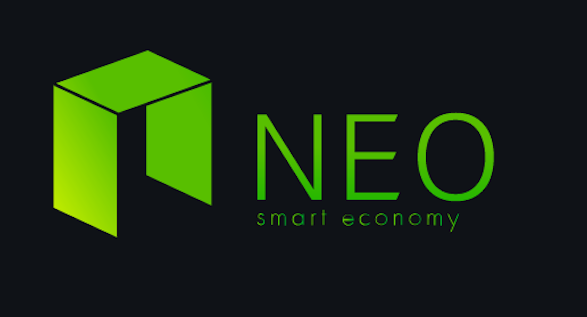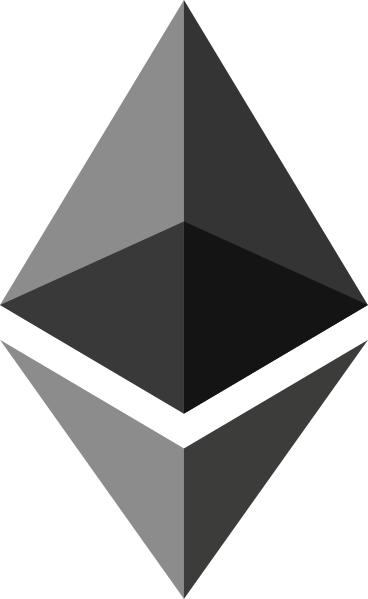In the article about NEO cryptocurrency we shared with you how the price of NEO surged in a crazy rally and in a short span of time (a NEO coin was trading at $1.91 on June 14, 2017, but by August 16, 2017 a price that shot up to $47.58 and over $100 in 2018).

While many are calling NEO the Chinese Ethereum, in reality this is only partially accurate. The two blockchains do have similarities, but also several fundamental differences.
However, it is important to first understand the similarities between NEO and Ethereum before outlining the key differences between them.

What you'll learn 👉
NEO vs. Ethereum: What are the Similarities?
Here are some of the key similarities:
- Both NEO and Ethereum are blockchain projects specifically designed to host Dapps, ICOs, and smart contracts in a decentralized manner.
- Both projects are turing complete, open-source, and backed by a big community backing with great and responsive teams.
- Their respective blockchains are fueled by crypto-assets (Ether in Ethereum and GAS in NEO).
In my opinion, these are the only key similarities between these two cryptocurrencies.
NEO vs. Ethereum: What are the Differences?
Today, there are many altcoins created in the crypto world. However, you will hardly find an Ethereum competitor and/or an alternative. I strongly believe that NEO might be a competitor and an alternative to Ethereum, because they both offer a decentralized solution to their users, allowing them to share anything of value (property deeds, money, confidential data, etc.) privately and securely, without the interference or surveillance of a third party —like a private business, government institution, and bank.
However, the NEO comes with better features – it’s faster, more user-friendly and more secure than Ethereum.
Here are the main differences between NEO and Ethereum:
Consensus mechanism
- NEO uses a delegated Byzantine Fault Tolerant (aka dBFT) consensus mechanism. This is an improved form of Proof-of-Stake (PoS)
- On the other hand, Ethereum uses a Proof-of-Work (PoW)
Proof-of-Work is a very energy-intensive and expensive, and dBFT is believed to be more energy efficient than PoW. However, in my opinion this isn’t a big advantage for NEO because Ethereum could eventually move to an efficient PoS mechanism.
Backers
- NEO is allegedly backed by the Chinese government and the People’s Bank of China (PBOC). This has become the most important factor for NEO’s popularity in China. NEO is also backed by Microsoft, Alibaba, and WINGS.
- Ethereum, on the other hand, is not backed by any nation’s government. However, it is supported by the EEA-Enterprise Ethereum Alliance, which speaks volumes about its popularity and potential success on the world’s stage.
Fueling the blockchain
- NEO produces a special crypto asset called NeoGAS (or GAS), which is a unique reward paid by NEO to investors holding NEO coins. NEO rewards all NEO owners with a dividend, because NEO coins are not mined.
- On the other hand, in Ethereum small units of Ether are used as “gas” to fuel the network, which means that Ethereum rewards miners for mining Ether.
Divisibility
- The native crypto-token of NEO’s blockchain (NEO token) is not divisible and it only exists in whole numbers (1, 2, 5, 10, 50, 100, 1000, etc.). But GAS is divisible.
- The native crypto-fuel of Ethereum is divisible and it can be divided (3.4352, 283.399403, etc.).
Staking
- NEO holders will get rewards in GAS proportionate to number of NEO tokens they hold
- Right now, there is no such option on Ethereum and won’t be while they use PoW. When they switch to PoS, there will be coin staking on ethereum blockchain as well.
Speed
- NEO can currently handle 1,000 transactions per second.
- At present, Ethereum can handle 15 transactions per second.
In my opinion, this is currently NEO’s biggest advantage. However, Ethereum’s founders are currently working on expanding its scale.
KYC Procedure
- NEO has a built in Know Your Customer functionality which is very important for businesses.
- Ethereum on the other hand, had a number of shady and straight out fraudulent ICOs on its platform done by anonymous scammers.
Direction
- NEO’s goal is to create a smart economy by digitizing traditional real world assets via digital identity, along with running decentralized applications (DApps) and smart contracts.
- Ethereum’s goal is to become the world’s only supercomputer that is based on the blockchain by hosting numerous use cases of digital identity, remittances, decentralized exchanges, computing, and KYCs (to name a few).
Programming Languages
- NEO is more user-friendly because it supports multiple programming languages compared to Ethereum (currently NEO’s smart contracts and DApps can be written and compiled inC# and Java). However, in the future, developers will also be able to write smart contracts in Python and Go, which will drastically reduce the entry barrier for all developers around the world.
- On the other hand, you have to learn a new programming language called Solidity if you want to write smart contracts and DApps on Ethereum. However, the problem is that very few people know this language. We are not sure why Ethereum hasn’t opted for some other, better-known programming language. We can only hope that will be changed at some point in the future.
Hard Fork
- NEO protects the integrity of your investment and is built in such a way that it doesn’t allow for unexpected “hard forks” to split its network.
- Ethereum has already undergone a hard fork that split its network into two, giving us Ethereum and Ethereum Classic—two separate cryptocurrencies.
Quantum computer-proof
- Another advantage of NEO is that it can handle quantum computing hacks. It is believed that quantum computers have the ability to break into and hack the cryptographic math on which blockchains are based. NEO makers claim they have already developed an anti-quantum cryptography mechanism called NeoQS.
- Ethereum, and every other cryptocurrency currently available, is not quantum computer-proof.
Number of ICOs
Most ICOs that were launched last year were built on the Ethereum blockchain, but there are now 27 new upcoming ICOs that are getting set to launch on or have already launched on NEO’s blockchain. One example is Guardian Circle ICO – they chose NEO over Ethereum because of the issue of congestion. The Ethereum platform has had a scalability problem for some time now, and launching a large application there is bound to face congestion issues. This is the biggest problem that the Guardian Circle team intends to avoid by shifting to the Neo (NEO) platform.
NEO vs. Ethereum: Who Will Win in This Battle?
Well, no one can really tell what the future holds.
NEO and Ethereum both have their own pros and cons, but their pros outweigh their cons when you compare them with most other cryptocurrencies out there.
NEO, the “Ethereum of the East”, has said they are positioning themselves to be in direct competition with Ethereum. However, I still think that there is a long way to go for them in terms of mainstream adoption. We tend to think NEO will be more widely adopted in China (because the Chinese government may adopt it and force Chinese citizens to use it) while the rest of the world will be running their Dapps in the Ethereum blockchain. This is not speculative investment advice; it’s a fact that Ethereum is still the second-most valuable cryptocurrency in the world, in terms of market cap. Also, Ethereum is well-positioned in the crypto market, especially when it comes to their technological aspects. On top of that, Vitalik Buterin, Ethereum founder, has recently unveiled the road map for the next iteration of Ethereum’s technology – Ethereum 2.0.
Overall, while Ethereum and NEO share capabilities, their goals are enormously different. Ethereum allows independent developers to prosper while NEO makes it easier for governments to regulate the blockchain. Therefore, the two platforms are not truly competitors and Ethereum’s massive lead in the ICO and DApp market might be irrelevant to NEO achieving its ambition of a regulated smart economy.






